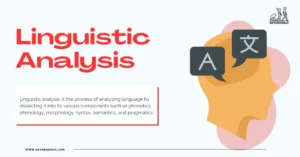AI Answer Evaluation Platform Live Now. Try Free Answer Evaluation Now
Evolution of Languages
The evolution of languages is a fascinating topic that offers a unique insight into the development of human societies and their communication systems. As humans spread across the globe, they developed and modified languages to suit their specific needs and environments. This article will delve into the origins of language, its evolution over time, the influence of technology, and the possible future of linguistic development.

Origins of Language
The origins of language are still a subject of much debate among linguists, anthropologists, and psychologists. Various theories have been proposed to explain the development of language, including the Bow-wow theory, which suggests that language evolved from imitating natural sounds; the Ding-dong theory, which posits that language developed from humans’ innate responses to environmental stimuli; the Pooh-pooh theory, which emphasizes the role of expressive vocalizations in language development; the Yo-he-ho theory, which argues that language emerged from rhythmic, cooperative activities; and the Cognitive theory, which attributes language development to humans’ unique cognitive abilities [1].
As early human populations migrated and settled in different regions, they developed unique linguistic systems that eventually diverged into distinct language families. The study of these families and their proto-languages, or ancestral languages, has provided valuable insights into the origins and evolution of human language.
Historical Evolution of Languages
The development of ancient languages, such as Sumerian, Egyptian, Sanskrit, Greek, and Latin, laid the foundation for modern linguistic systems. The growth of empires and trade routes facilitated the spread of languages and the borrowing of words and grammatical structures between different linguistic communities. For instance, the Roman Empire contributed to the evolution of Romance languages, while the Arab-Islamic Caliphates played a significant role in the dissemination of the Arabic language and its influence on other languages [2].
The emergence of national languages was a critical milestone in language evolution. The rise of vernacular languages, coupled with the invention of the printing press, contributed to the standardization and dissemination of these languages, leading to a decline in the use of Latin and other classical languages in various domains of human activity.
The Impact of Colonization and Globalization
Colonization and globalization have played a significant role in the evolution of languages. European colonial powers, such as Spain, Portugal, France, and Britain, spread their languages across the world, leading to language shift and endangerment in many indigenous communities [4]. However, these interactions also gave rise to new contact languages, such as creoles and pidgins, which emerged as a result of communication between speakers of different linguistic backgrounds.
The Influence of Technology on Language Evolution
The advent of the internet and digital communication technologies has significantly impacted language evolution. These innovations have led to the emergence of digital languages, such as internet slang and emojis, and the spread of global English as a lingua franca [3]. Moreover, advancements in artificial intelligence and natural language processing have led to the development of sophisticated machine translation systems that bridge linguistic barriers and facilitate cross-cultural communication.
The Future of Language Evolution
The future of language evolution is closely tied to efforts in language preservation and revitalization. As many languages face the threat of extinction, researchers and activists work to document and preserve endangered languages and promote language revitalization movements to ensure their survival [6]. Additionally, the role of technology in shaping language evolution cannot be underestimated. As new technologies continue to emerge, they will undoubtedly influence the ways in which humans communicate and the languages they use.
Conclusion
The study of language evolution offers a unique window into human history, as well as a tool for understanding the complex interplay between cultural, political, and technological forces. As we continue to explore the ever-changing linguistic landscape, it is essential to recognize the importance of preserving linguistic diversity and fostering greater understanding between language communities. By acknowledging and embracing the dynamic nature of languages, we can better appreciate the rich tapestry of human communication that has evolved over millennia and anticipate the exciting linguistic developments that lie ahead.
References
[1] Aitchison, J. (2013). Language Change: Progress or Decay? Cambridge University Press.
[2] Crystal, D. (2004). The Stories of English. Penguin.
[3] Deutscher, G. (2011). The Unfolding of Language: An Evolutionary Tour of Mankind’s Greatest Invention. Random House.
[4] Mufwene, S. S. (2001). The Ecology of Language Evolution. Cambridge University Press.
[5] Pinker, S. (1994). The Language Instinct: How the Mind Creates Language. HarperCollins.
[6] Trask, R. L. (2000). Time Depth in Historical Linguistics. McDonald Institute for Archaeological Research.
[7] Wells, J. C. (2008). Longman Pronunciation Dictionary. Pearson Longman.



